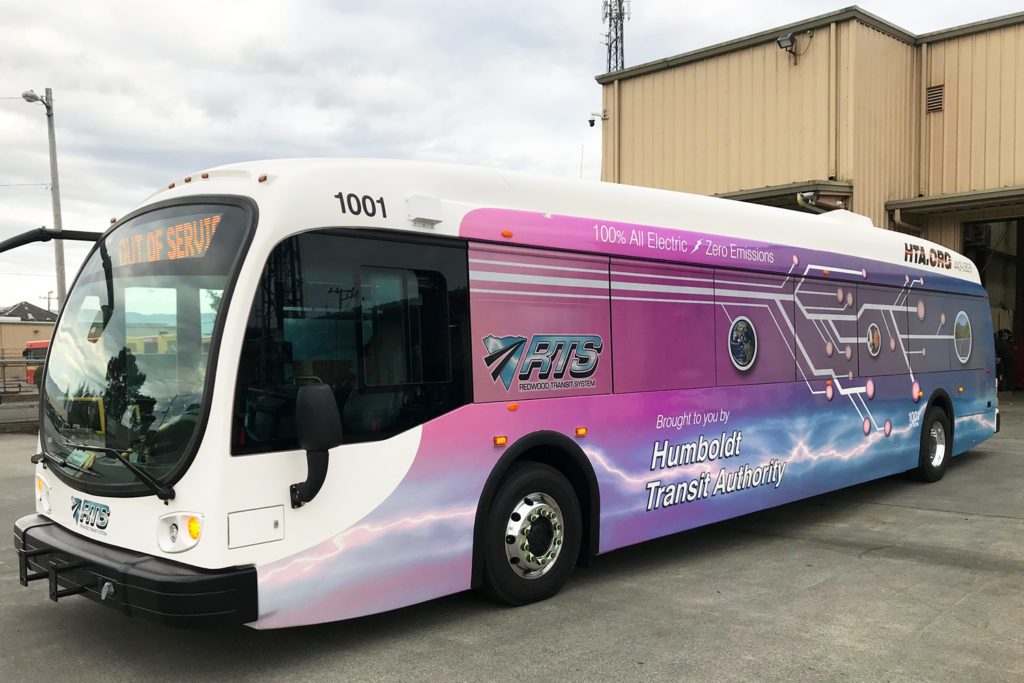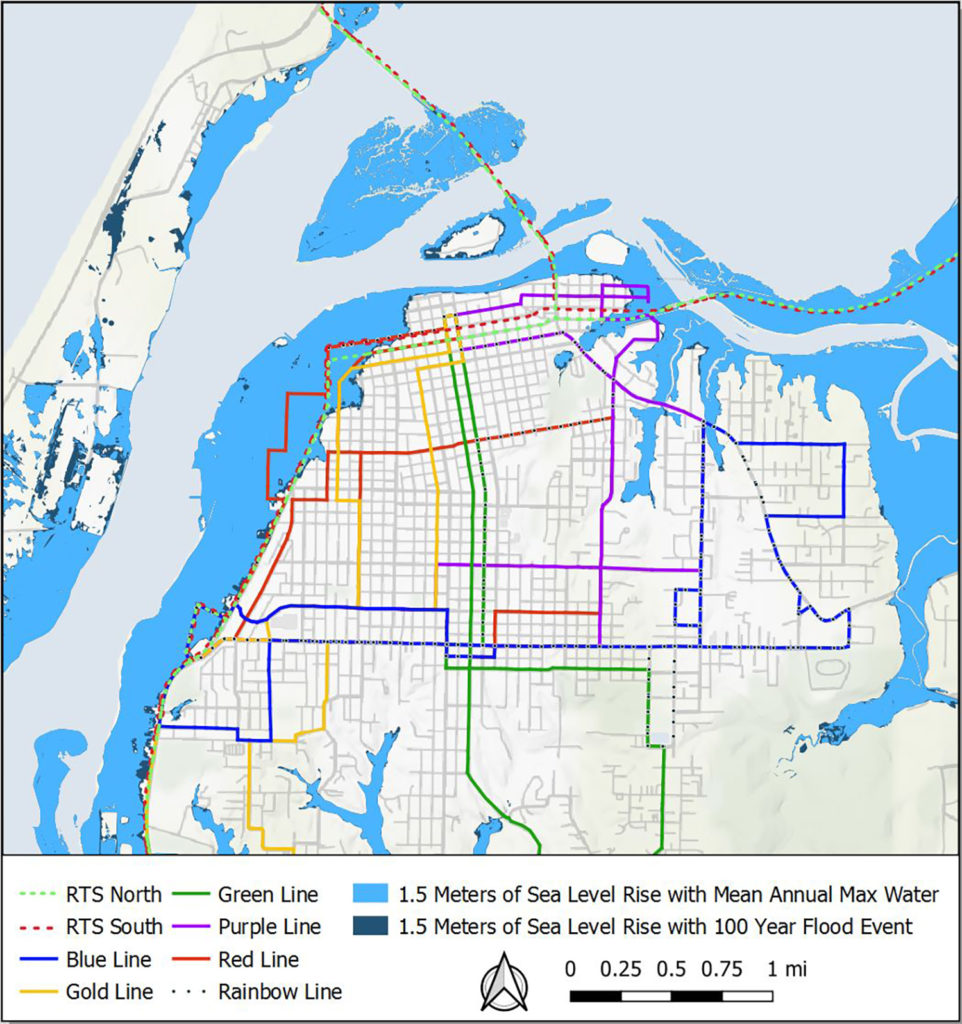
California’s transportation sector is responsible for more than 40% of the state’s greenhouse gas emissions — even before adding “upstream” emissions from fuel extraction and refining. Alongside significant efforts to increase consumer adoption of cleaner vehicles, the California Air Resource Board aims for all public bus fleets to be zero-emission (ZEB) by 2040. Starting in 2029, public agencies can only purchase zero-emission buses (battery electric or fuel cell), and local transit authorities are required to submit a complete rollout plan by 2023.
The Humboldt Transit Authority (HTA) brought its first ZEB online in June 2019. This battery electric vehicle runs daytime routes between College of the Redwoods and Cal Poly Humboldt. HTA owns and operates 33 buses across four transit systems, most of which have a 12 year lifespan as dictated by federal funding requirements.
To fully convert Humboldt’s regional bus system from fossil fuel to electricity, we need to account for a future that includes climate change. Challenges include:
- If a power outage prevents charging, buses may be unable to make their regular schedules.
- Sea level rise, extreme weather events, and wildfires can impact charging station infrastructure and vehicle access.
- Emergency response plans may assign evacuation responsibilities to public transit fleets. Regional planners need to understand the capabilities and requirements of an electrified fleet.
Our recent work for HTA includes two projects: (1) collaboration on a microgrid design for HTA’s main campus in Eureka, and (2) development of a climate resilient electrified transit plan. The microgrid design was completed this spring, and we will deliver the transit plan in 2020.
HTA Main Campus Microgrid
A microgrid at the HTA main campus would ensure that bus charging could continue even during an extended outage. We recently collaborated with McKeever Energy & Electric, Inc. to design a microgrid with a 362 kW solar array and over 500 kWh of battery storage. In standard conditions, the grid-connected system would provide 750 kW for bus charging, and 50 kW for public vehicle fast charging. During a power outage, the islanded microgrid would provide energy for up to 400-800 bus miles each day.
Climate Resilient Electrified Transit Plan

The HTA Climate Resilient Electrified Transit Plan will be composed of two components:
- Electric charging infrastructure report — To date, there is no standard methodology for spacing electric vehicle charging infrastructure along an established route. We are currently developing a GIS-based model to optimize the number and location of charging stations that will need to be built, while maintaining existing routes and schedules.
- Climate risk and adaptation report — Sea level rise, wildfires, and extreme weather events will present new challenges to an electrified fleet. We recently completed a literature review to clarify the predicted impacts of climate change within Humboldt County. Next, we will assess the associated risks to our current bus routes and planned charging stations. Recent sea level rise studies for Humboldt Bay suggests that without intervention, several routes could be recurringly underwater before 2100. We are also working to identify emergency response activities for which public transportation could be utilized.
In the map shown here, bright blue areas represent the average yearly maximum inundation. Overlapping bus routes would be underwater during these events. (The image includes 2019 HTA bus routes and data from Northern Hydrology & Engineering’s inundation maps for sea level rise on Humboldt Bay.)












